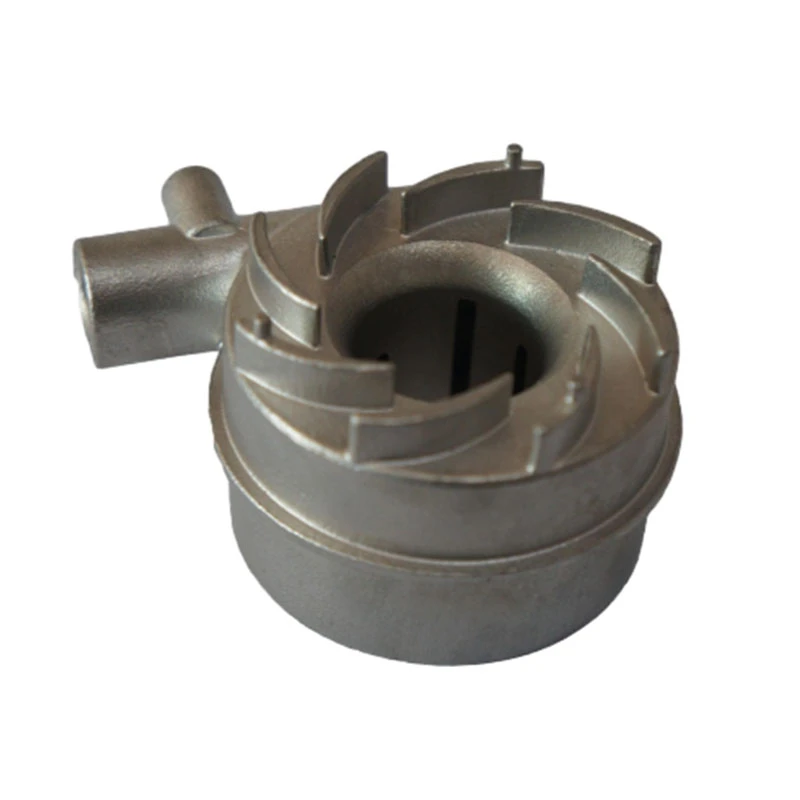High-Quality Aluminum Die-Cast Components for Versatile Industrial Applications
Die Cast Aluminum Parts The Key to Precision and Efficiency in Manufacturing
Die casting is a manufacturing process that has gained immense popularity across various industries, especially for producing aluminum parts. The technique involves forcing molten aluminum into a mold cavity under high pressure, which results in high precision and excellent surface finish in the final product. This article will explore the advantages of die cast aluminum parts, the process itself, and their applications across different sectors.
The Die Casting Process
The die casting process begins with the melting of aluminum, which can be sourced from various alloys to achieve desired properties. The molten aluminum is then injected into a metal mold, known as a die, using high-pressure machinery. The key steps in the process include
1. Mold Preparation The dies are pre-heated and coated with a release agent to facilitate the easy removal of the finished part. 2. Injection The molten aluminum is injected into the mold cavity at high speed and pressure, allowing it to take the shape of the mold. 3. Cooling and Solidification As the aluminum cools, it solidifies in the mold, forming the desired part. 4. Ejection Once cooled, the mold is opened, and the finished part is ejected. 5. Finishing Post-production processes such as trimming, machining, or surface treatment may follow to achieve specific dimensions and surface quality.
Advantages of Die Cast Aluminum Parts
1. Precision Die casting allows for highly accurate dimensions and consistent quality. The process can produce complex geometries that are often difficult or impossible to achieve with other manufacturing methods.
2. Efficiency The high-speed nature of die casting means that large quantities of parts can be produced in a short timeframe. This is particularly beneficial for industries that require mass production.
3. Material Utilization Die casting minimizes waste, as excess aluminum can often be recycled back into the process. This makes it a more sustainable option compared to other methods.
4. Surface Finish Die cast aluminum parts generally have excellent surface finishes. This feature reduces the need for extensive post-processing, saving time and costs.
die cast aluminum parts

5. Strength and Durability Aluminum is known for its lightweight yet robust nature. Die cast aluminum parts possess good mechanical properties, making them suitable for various demanding applications.
Applications of Die Cast Aluminum Parts
Die cast aluminum parts are utilized in numerous industries due to their versatility. Some of the prominent applications include
- Automotive Industry Components such as engine blocks, transmission housings, and wheel rims benefit from the lightweight and strong properties of aluminum die casting. The automotive sector increasingly leans towards aluminum for improved fuel efficiency and performance.
- Electronics The consumer electronics industry uses die cast aluminum for enclosures, heat sinks, and structural components. The excellent thermal conductivity of aluminum helps dissipate heat, enhancing product longevity.
- Aerospace In aerospace applications, die cast aluminum components are crucial for reducing weight while maintaining structural integrity, thereby improving fuel efficiency in aircraft.
- Industrial Equipment Many types of machinery and equipment rely on die cast aluminum parts for components that require high strength-to-weight ratios, such as housings and structural members.
Conclusion
Die cast aluminum parts represent a significant advancement in manufacturing technology that addresses the growing demands for precision, efficiency, and sustainability. With applications spanning multiple industries such as automotive, electronics, aerospace, and industrial equipment, the benefits of this process make it a preferred choice for manufacturers. As technology continues to evolve, we can expect even greater innovations in die casting, further enhancing its capabilities and applications in the future.
-
Pros & Cons of Sand Casting: Products & ApplicationsNewsAug.19,2025
-
Advanced Crawler Drilling Rig for Confined Spaces-Baoding Hairun Machinery And Equipment Trading Co., Ltd.NewsAug.18,2025
-
Crawler Drilling Rig- Baoding Hairun Machinery And Equipment Trading Co., Ltd.|Pneumatic Power,Frame-Supported DesignNewsAug.18,2025
-
Precision OEM Valve Body Castings for Superior PerformanceNewsAug.18,2025
-
Crawler Mounted Drill Rig - Baoding Hairun Machinery | Underground Drilling SolutionsNewsAug.18,2025
-
Crawler Mounted Drill Rig - Baoding Hairun | Pneumatic Safety, Mining EfficiencyNewsAug.17,2025















